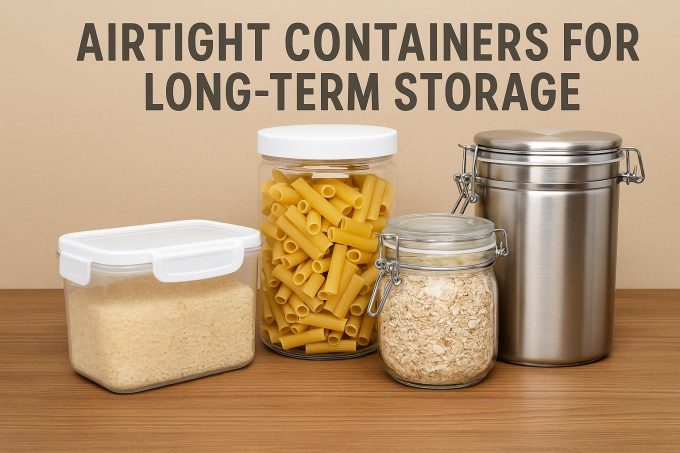Understanding Airtight Containers for Long-Term Storage
Airtight containers are essential tools for preserving the freshness and quality of various items over extended periods. They create a sealed environment that helps protect contents from exposure to air, moisture, and contaminants. This makes them ideal for storing food, pharmaceuticals, documents, and other sensitive materials.
Materials Used in Airtight Containers
Airtight containers are manufactured from different materials, each offering distinct advantages. Understanding these material choices is crucial for selecting the right type of container to meet specific storage needs.
Plastic: Plastic containers are popular due to their lightweight nature and versatility. They are available in a wide range of sizes and shapes, which makes them adaptable to various storage requirements. Many plastic containers are labeled as BPA-free, ensuring safety when used for storing food. The cost-effectiveness of plastic containers makes them an attractive choice for individual and commercial storage solutions. Additionally, their durability and ease of handling add to their appeal for everyday use.
Glass: Glass containers are highly regarded for their sturdiness and resistance to odors and stains. This material’s non-porous nature prevents the absorption of flavors or aromas, making it a suitable choice for preserving the taste and quality of stored goods. Glass containers are generally microwave and dishwasher safe, offering convenience for users who need to heat and clean the containers frequently. While they may be more susceptible to breakage compared to other materials, their durability and environmentally friendly nature make them a preferred choice for many.
Metal: Metal containers, often crafted from stainless steel, provide a robust and rust-resistant option for storage. These containers are ideal for items requiring extra protection, such as tools or ingredients that may react with moisture or air. The strength of metal containers offers a dependable solution for long-term storage, particularly in environments where durability is critical. Additionally, their resistance to external impacts makes them suitable for transporting sensitive items.
Benefits of Using Airtight Containers
The primary benefit of airtight containers is their ability to preserve freshness by preventing exposure to air and moisture, which can lead to spoilage. The sealed environment within these containers maintains the quality of stored items, reducing the chances of decomposition and extending shelf life.
Airtight containers thus act as a barrier against undesirable external elements. By preventing seepage of air and moisture, they protect stored items from contaminants such as dust or insects. This added protection is particularly relevant in areas prone to these environmental factors, further enhancing the usability of airtight solutions in diverse settings.
In addition to protection, airtight containers contribute significantly to organizing spaces. Whether used in the pantry, kitchen, or office, these containers help manage clutter by offering a tidy storage solution. Their stackable design and clear visibility often assist users in easily identifying contents, further aiding in organization and optimal usage of available space.
Applications Beyond Food Storage
Although airtight containers are primarily associated with food storage, their applications extend to other critical areas as well:
Pharmaceutical Storage: The integrity of pharmaceuticals largely depends on maintaining their compositional stability. Exposure to air and moisture can degrade many medications, impacting their potency and, consequently, their efficacy. Airtight containers play a crucial role in preserving these products by creating a controlled environment that prevents chemical or physical alterations.
Document Preservation: Documents, especially those holding legal and historical significance, require protection from environmental factors contributing to their deterioration. Factors like humidity, dust, and light exposure can degrade paper and ink, jeopardizing valuable records. Airtight containers offer a protective solution by safeguarding documents against these risks and potentially extending their lifespan.
Choosing the Right Airtight Container
When selecting an airtight container, it is vital to consider the type of material, the storage environment, and the specific needs of the contents. Different storage conditions may require specific materials or features to ensure effectiveness.
For instance, food storage necessitates selecting containers made from food-safe materials to avoid contamination. Similarly, some foodstuffs may require UV protective features to prevent degradation when exposed to light, especially items stored in transparent containers. Furthermore, for users looking to store non-food items like documents, the option of UV protection becomes pertinent as a means of preserving contents from light exposure.
In summary, understanding the different aspects and features of airtight containers is pivotal to maximizing their benefits. As airtight containers continue to garner attention for their effectiveness in protecting against environmental hazards, their relevance in diverse storage applications reaffirms their position as essential storage solutions. For further reading on storage solutions, consider visiting external informational resources by following this link to explore a wide array of airtight storage products and best practices.

